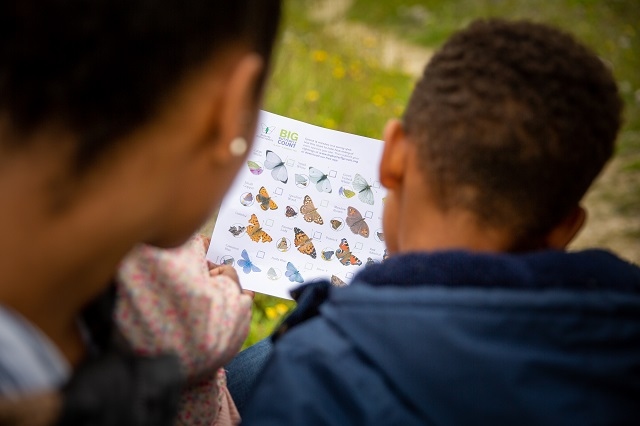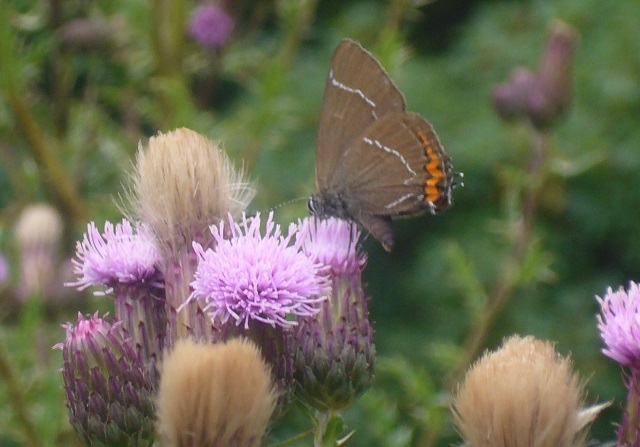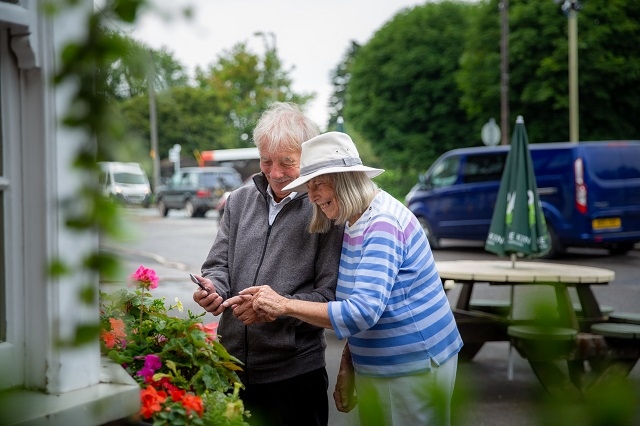Big Butterfly Count launches
Date published: 16 July 2021

Photo: Butterfly Conservation
The Big Butterfly Count
The annual Big Butterfly Count – a UK-wide butterfly spotting survey – launches today (Friday 16 July).
The Big Butterfly Count is Butterfly Conservation’s annual three-week citizen science event. The UK-wide survey is open to everyone, of any age, living in towns, cities or the countryside. Taking part just requires you to spend 15 minutes in an outdoor space counting the amount and type of butterflies, and some day-flying moths, you see. It is easy to do and the more people who do it, the greater the benefits to our understanding of nature and how to help it.
The weather in spring 2021 has been very challenging for many of the UK’s butterflies and moths. Although April was the sunniest on record, it was also very cold with a record number of frosts. This was then followed by the wettest May for over 50 years. UK charity Butterfly Conservation needs the public’s help to measure how these conditions have affected our butterflies and moths.
Current records show that many species of butterflies have had a poor spring or a delay in their emergence following 2021’s unseasonably cold and wet weather. The Speckled Wood was particularly low in numbers this spring, and the Small Tortoiseshell, Comma, Green-veined White, Large White and Red Admiral were also all down in abundance compared with their 10-year average.

© Richard Greenwood
Locally, the rare White-letter Hairstreak is also at risk of disappearing as two elm trees at Summit Nature Reserve, Littleborough, and Prettywood, Heywood – where there have been significant colonies of the butterflies – have now died. The local area is suffering badly from a recurrence of Dutch elm disease; numbers of the White-letter hairstreak, which feeds on elm trees, subsequently declined when Dutch elm disease swept Britain in the 1970s.
The butterfly is difficult to spot and occasionally comes down to ground level to nectar on flowers, especially privet and bramble.
The UK is experiencing an increasing number of extreme weather events, a likely result of climate change, and it’s important we learn the effect these changes have on our native butterfly species in order to understand the likely long-term impacts on biodiversity.
There were over 145,000 counts submitted to the Big Butterfly Count last year, more than ever before. Though worryingly, 2020 also saw the lowest average number of butterflies logged since the event began twelve years ago. Butterfly Conservation scientists are keen to see if this is a trend that continues in 2021. This means it’s more important than ever that the public take part and help to gather the data needed.

Chris Packham, Vice-President of Butterfly Conservation and wildlife broadcaster, said: “Biodiversity and climate crisis is an urgent issue and it can be overwhelming to think about what we can do as individuals to really make a difference. Because butterflies and moths make excellent indicators of the impacts of climate change and other human environmental factors, collecting data on their numbers is really important. So, something as simple as recording a butterfly spotted in your garden, at your local park or on your window box can play a part in vital research into a global problem. It’s a really valuable contribution everyone can make.”
Dr Zoë Randle, Senior Surveys Officer at Butterfly Conservation added: “We really need the public’s help to understand what is happening to our butterfly and moth populations. It’s a small but crucial thing everyone can do. This information will not only help us to protect these species, but also to inform what effect the changing climate is having on our biodiversity.”
Taking part in the Big Butterfly Count is something anyone of any age or ability can do, in any outdoor space. It provides a real contribution to science and our understanding of butterfly and moth populations in the UK.

This year the Big Butterfly Count is sponsored by garden wildlife specialist Vivara and the DFN Foundation, a commissioning charity focused on influencing sustainable change in special needs education, supported employment, healthcare and conservation.
This year’s Big Butterfly Count runs from 16 July to 8 August. For more information and to take part simply visit www.bigbutterflycount.org or download the free Big Butterfly Count app.
Do you have a story for us?
Let us know by emailing news@rochdaleonline.co.uk
All contact will be treated in confidence.
Most Viewed News Stories
- 1Former councillor and hospital campaigner Jean Ashworth has died
- 2Northern Healthcare opens supported living service in former Rochdale hotel
- 3Middleton school hails another outstanding inspection result
- 4Family event to celebrate Earth Day to be held at Number One Riverside
- 5No trams between Oldham and Rochdale this Sunday
To contact the Rochdale Online news desk, email news@rochdaleonline.co.uk or visit our news submission page.
To get the latest news on your desktop or mobile, follow Rochdale Online on Twitter and Facebook.


